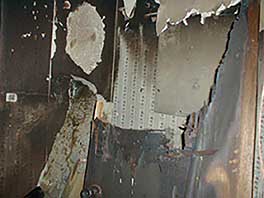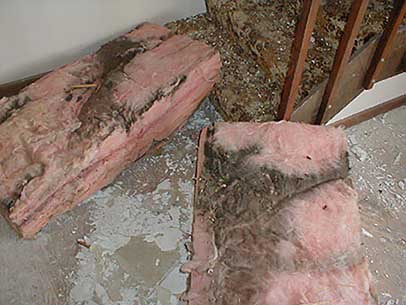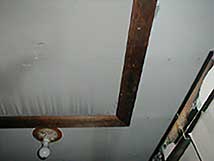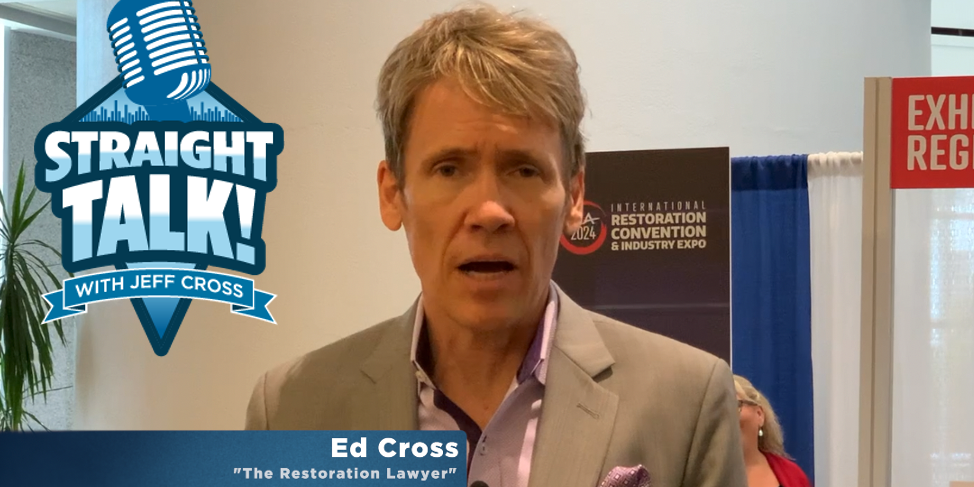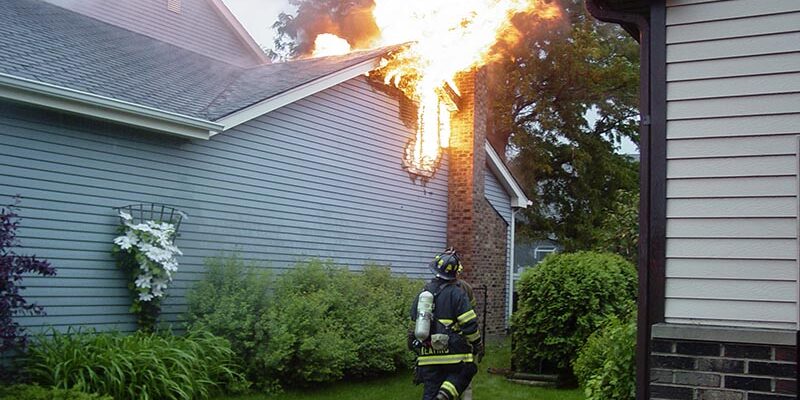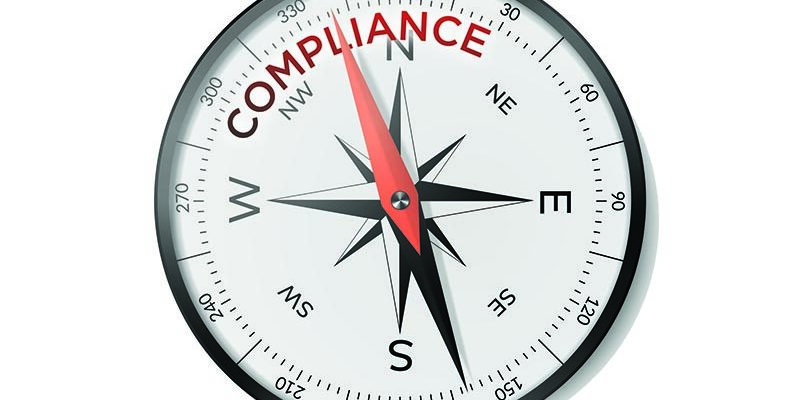Identifying Fire, Smoke, and Heat Damage
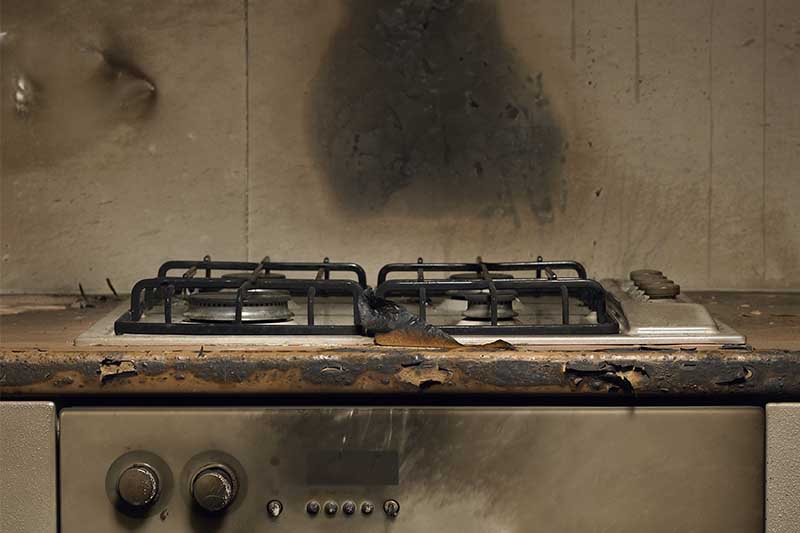
By David Oakes
When talking about fire restoration, the damage that first comes to mind is typically that caused by the flames, physically burning materials on the property. But this is only one facet of the damage a fire does. The heat, smoke, and other corrosive substances emitted by the fire can be equally destructive to property and costly to restore.
Smoke damage
The residues, gases, and vapors produced by fire are products of incomplete combustion (PIC) that can include particle matter (PM), polycyclic aromatic hydrocarbons (PAHs), carbon dioxide, carbon monoxide, heavy metals, dioxins, and other complex chemical compounds, according to the U.S. Environmental Protection Agency and Centers for Disease Control. Chemical composition varies with the material burned, the amount of oxygen available, combustion temperature, and humidity. These variables change during the fire, as do the resulting PICs.
As particles settle or are deposited by pressure, or as vapors condense on surfaces, the PICs form a film that in itself is complex; not a single film but the sum of multiple different chemical compounds. Some of these PICs are known or suspected carcinogens. Residues tend to be acidic in nature and can produce offensive odors. High acid residue fires cause damage to surfaces and finishes. Timely mitigation by cleaning can neutralize these acid residues and can sometimes prevent additional damage and staining. The good news is high levels of the toxic, nasty PICs generated during the fire dissipate significantly when the fire goes out. Depending on the severity of the damage, there may be a need for engineering controls (ventilation and/or HEPA air scrubbers) and personal protective equipment (PPE).
The conventional wisdom is that respiratory protection (P100 level with HEPA organic vapor cartridges) and dermal protection (gloves and suits) is adequate PPE—but we’re not certain. The IICRC committee working on the Field Guide for Safety and Health for Disaster Restoration Professionals is running a series of scientific tests to analyze PICs to determine the minimum levels of engineering controls and PPE necessary. Look for more information when the committee publishes the results of these tests.
Heat damage
Damage from high heat is easily identified as physical damage, char, or blistering. Temperatures in a structure fire can exceed 1,800 degrees Fahrenheit. Heat can cause damage to surfaces and materials at much lower temperatures. For example, gypsum goes through a process of calcination at 176 degrees Fahrenheit where it changes both physically and chemically (release of water). At this point, the gypsum becomes brittle and can begin to crumble. The “heat line” is a visible demarcation between heavy and light smoke residue. An easy way to determine if the gypsum is damaged is to tap the drywall below the heat line and above the heat line; there will be an audible difference in the tone where this calcination has occurred. The heat line can be used as a reference to determine the potential restorability of structural components and contents.
In addition to physical damage, heat drives PICs into surfaces as heat expands or opens the surface. Cooling then locks in the PICs. This type of damage requires cleaning and then sealing (or refinishing) or replacement. Often heat damage does not manifest itself until the item is move or cleaned.
Pressure damage
All fire damage has a pressure component that can help us understand why PICs end up in seemingly odd areas. A protein fire produces little pressure, but thermal dynamics will cause the PICs to be attracted to cool surfaces either by pressure or condensation. Areas in the kitchen behind cabinets and appliance mounting cavities, cool closets several closed doors beyond the source, and the inside of cabinets and case goods are suspect locations of residue and odors. Cleaning to remove the PICs will resolve the associated protein odor.
For PICs to be deposited in the interstitial areas behind drywall there needs to be significant pressure and a pathway. Smoke damage from a candle doesn’t produce enough pressure for PICs to make their way behind drywall. Even a fire with significant physical flames, heat, and smoke damage won’t force smoke behind drywall unless there is a pathway such as an opening or physical damage. If the ceiling is breached in a fire and the smoke is allowed access the attic, not only will the attic have smoke damage, but it is also quite possible that the pressures created in the attic will force smoke down into the wall cavities through chases, plumbing, or electrical access openings. Smoke tracks leave telltale signs that the drywall will need to be removed and smoke residue will need to be addressed.
Addressing damages
Depending on the nature of the smoke and the surface involved, PICs often can be successfully removed by cleaning provided there is no heat damage. Heat damage often requires refinishing or replacing the surface. When addressing fire damage, restoration professionals must understand and consider the dynamics of fire, smoke, heat, and pressures to accurately assess the damage and prepare a successful scope of work.
Resources
“Particulate Matter (PM) Basics.” United States Environmental Protection Agency.
epa.gov/pm-pollution/particulate-matter-pm-basics
“Polycyclic Aromatic Hydrocarbons (PAHs) Factsheet.” Centers for Disease Control and Prevention: National Biomonitoring Program.
cdc.gov/biomonitoring/PAHs_FactSheet.html
“Fire Dynamics.” United States Department of Commerce: National Institute of Standards and Technology.
nist.gov/el/fire-research-division-73300/firegov-fire-service/fire-dynamics
David Oakes has worked in the cleaning and restoration field since 1973. He consults for both restoration contractors and insurance companies and has served as an expert witness in state and federal court. Oakes is an RIA Certified Restorer, holds multiple IICRC certifications, and is an IICRC approved instructor, teaching restorative drying classes, among others. He is currently chairman of the ANSI/S540 2021 Consensus Body and serves on the IICRC Field Guide for Safety and Health for Disaster Restoration Professionals and the Harmonized Industry Glossary Committee.


